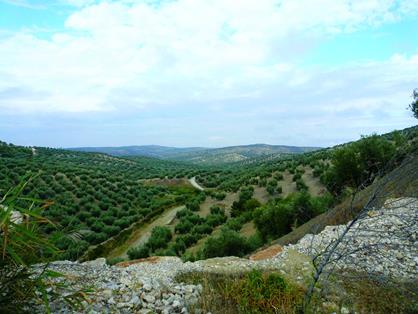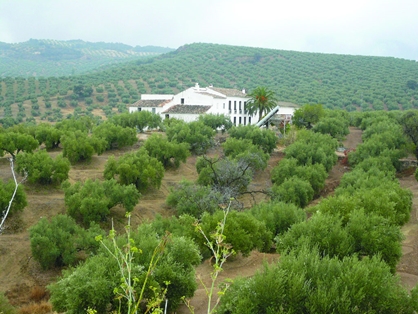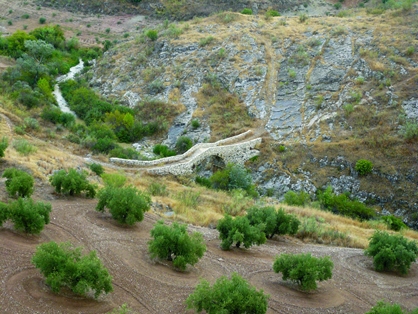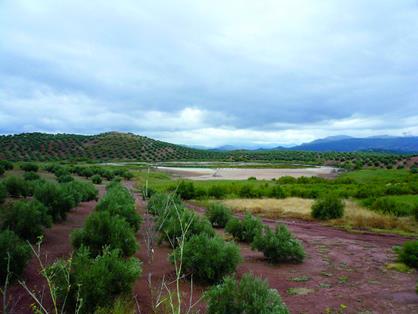Aceite Greenway Nature Trail: Jaén to River Guadajoz
Description

In a sea of olive trees
This route in Jaén partially follows the old railway line that transported products from Jaén and Cordoba, especially olive oil, to the port of Malaga, hence the name “Oil Train”.
The route begins in the north of Jaén, at the "La Fuentezuela" Sports Centre, on Juez Juan Ruiz Rico Avenue. A rest area is located soon after the trailhead. The Trail winds entirely through olive groves. In fact, Jaén is the province with the highest density of olive trees in the world. Not only will the olive trees accompany the traveller along this route, but also the distinctive aroma of oil mills.
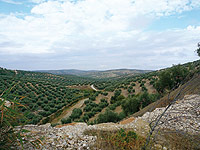
The trailhead of Los Torreones Archaeological Route appears soon after starting the route. This 32-kilometre loop route wanders through medieval fortifications, towers, castles and watchtowers of strategic importance to both Christians and Muslims. The route returns to the Nature Trail at the junction with Camino de la Aldehuela. This path leads to Torre de la Aldehuela, only 800 m away, where stand the remains of a two-storey, square fortress with pointed vaults. The remains of a hydraulic system used to irrigate the surrounding fields can also be seen.
The route continues to Torredelcampo station and rest area. Further on, it passes through two tunnels and two iron viaducts, built by two disciples of Eiffel, Daydé and Pillé. Not only is the structure itself interesting, but also the panoramic views of the area.
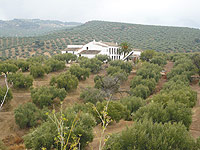
The railway stop for Torredonjimeno and a rest area can be found soon after. Next, the Trail crosses two bridges and the A-306 to arrive at Martos. Another 31-kilometre loop route begins here. This route, known as Ruta de la Sierra de los Ahillos, winds through olive groves, Mediterranean scrubland and small villages or farmhouses typical to the area, ending in Alcaudete, where it once again joins the Nature Trail.
Further along the Olive Oil Nature Trail is Vado-Jaén station and another rest area. This station, located seven kilometres from the nearest town, was once an important railway junction. The first of nine viaducts, built over the River Víbora, will appear next. Close by is a medieval single-arch bridge. After crossing two more viaducts, the route reaches Alcaudete Station, currently converted into a private house near which there is a rest area.
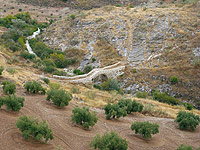
The next section is dominated by Laguna Honda Nature Reserve and Laguna del Chinche Nature Reserve, the two best-preserved wetlands in the province of Jaén. Despite significant variations in water level throughout the year, these wetlands are home to endangered species like the white-headed duck (Oxyura leucocephala) or green-winged teal (Anas crecca), along with other more common, but equally interesting species for birdwatchers like the northern pintail (Anas acuta), common coot (Fulica atra), common shelduck (Tadorna tadorna) or, even, Eurasian marsh harrier (Circus aeruginosus). Shortly after crossing these lagoons, the route reaches the last two viaducts. The last one crosses over the River Guadajoz, which is the natural boundary between the provinces of Jaén and Córdoba.
This Trail ends here, and the Subbética Nature Trail begins on the other side of the viaduct.
Profile
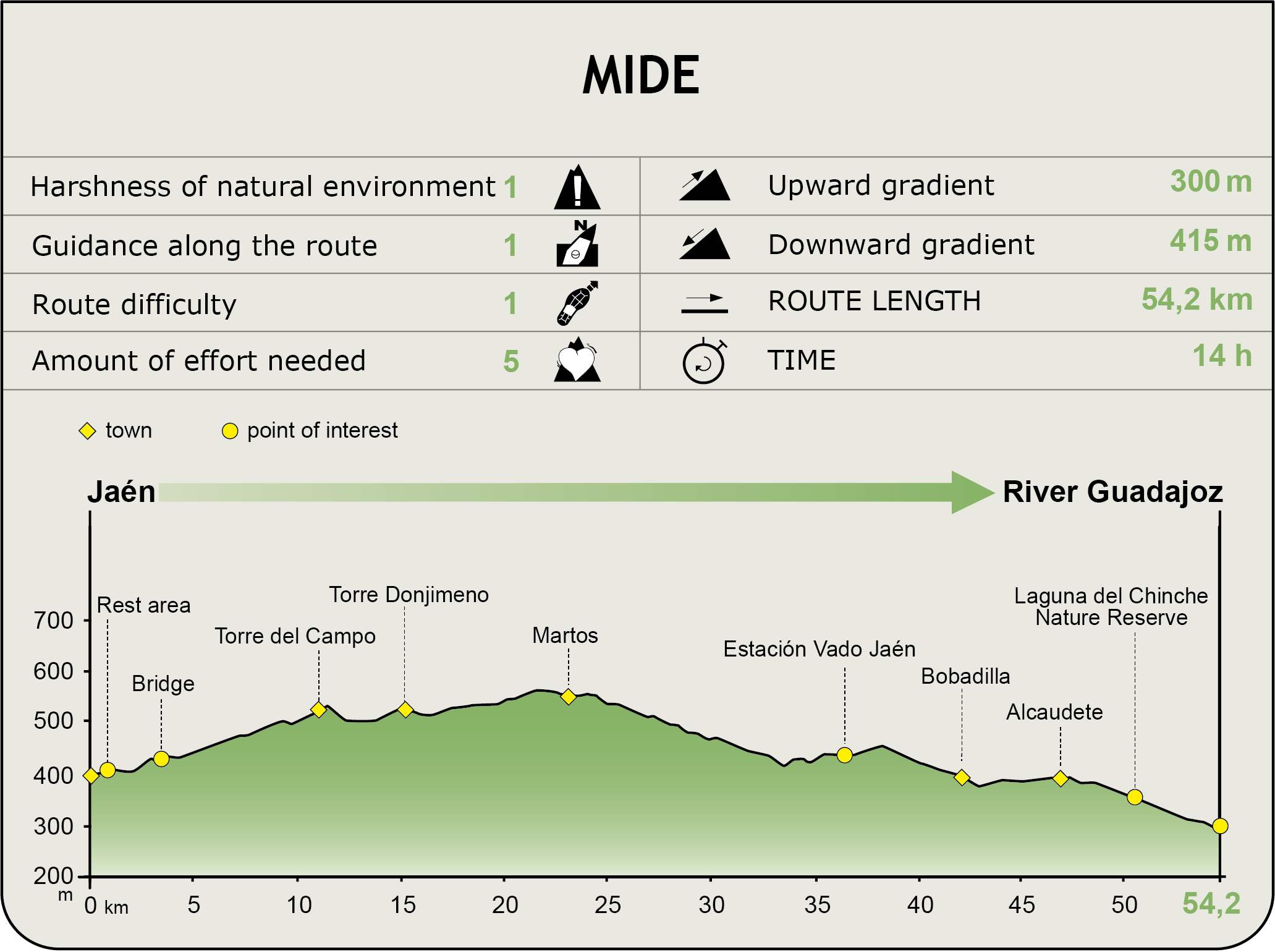
MIDE (Method for the Information of Excursions)
Featured
Further information
On the Battlefield
Numerous archaeological remains attest to the rich history of the province of Jaén. It was occupied by Carthaginians, Romans, Muslims and Christians. Owing to its strategic location, gateway to Andalusia by the River Guadalquivir, and natural route into Castile through Sierra Morena, Jaén is the land of thousand battles. Some battles determined the fate of Spain, in particular, the Battle of Las Navas de Tolosa, which led to the gradual decline of Muslim power in the Iberian Peninsula, and the Battle of Bailén, which resulted in the withdrawal of French troops to the north, and the return of Napoleon to France with his army, which had occupied the entire peninsula, except for Cadiz.
The wide range of fortifications strewn along the Ruta de los Castillos y de Las Batalla is proof of its strategic importance. The traveller is invited to visit the fortifications, castles, monuments and historical sites that populate Ciudad Real, Jaén and Granada, and that are included in the various routes of this Nature Trail.
Proud olive harvesters
If anything, the countless olive trees stretching to the horizon, and its namesake flagship product, give this Nature Trail its distinctive character.
Jaén is best known for its olive oils, which contribute to making Spain the world's largest producer. Olive trees and olive oil have been a constant feature in human history, in particular, in the history of Mediterranean societies.
In the Iberian Peninsula, olive stones have been found in prehistoric sites. In fact, there is even a wild variety of olive tree, the "acebuche". Olive oil from Hispania was highly regarded in the Roman empire, and Arabs encouraged the cultivation and extraction of oil. Currently, the importance of olive oil in Spanish culture, with its many uses, especially in cuisine and medicine, is beyond question.
